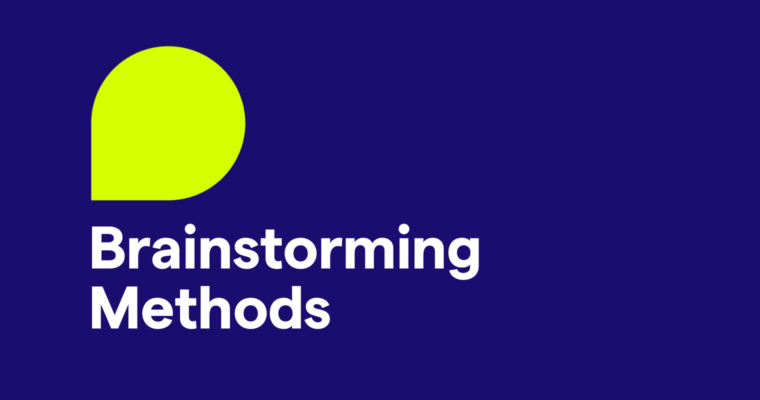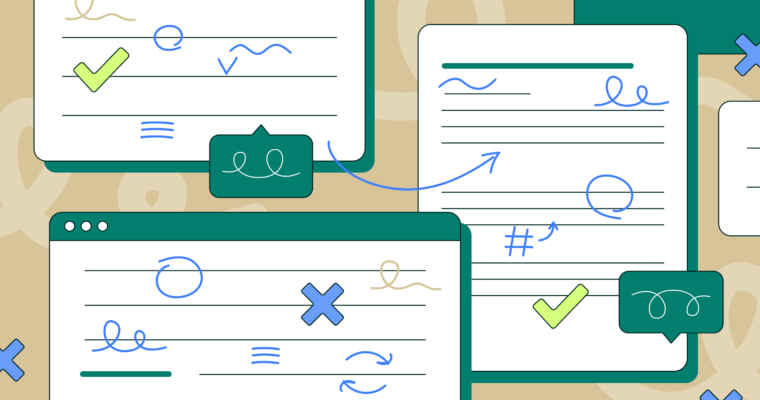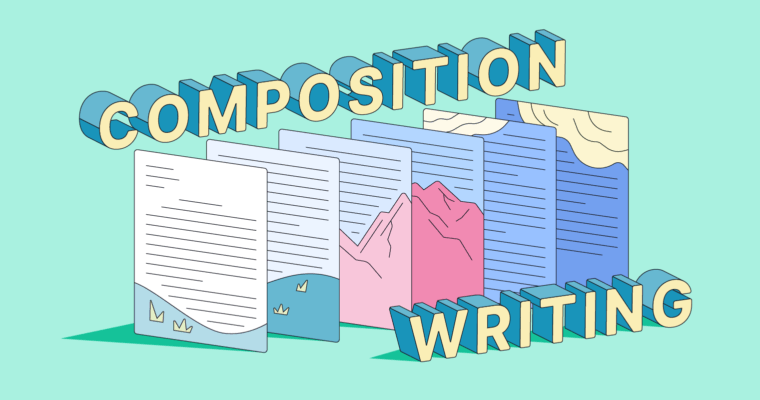
Great ideas start with the right brainstorming approach. Whether you need a spark of inspiration, a structured plan, or a collaborative method, choosing the right technique can make all the difference.
In this guide, you’ll discover 17 brainstorming techniques designed to help you generate, organize, and refine your ideas:
- Classic techniques like freewriting and mind mapping to get your creativity flowing.
- Collaborative methods that invite fresh perspectives and encourage teamwork.
- Visual strategies for those who think best with images, sketches, and diagrams.
- Analytical approaches that break down ideas for deeper insights.
- Digital tools, including AI-powered brainstorming with Grammarly, to refine and expand your thinking.
No matter how you brainstorm, there’s a method that will help you tap into your creativity and bring your best ideas to life. Let’s explore the options and find what works best for you!
Table of contents
Classic brainstorming techniques
Collaborative brainstorming methods
Visual brainstorming techniques
Structured analytical brainstorming
Classic brainstorming techniques
These fundamental brainstorming techniques lay the groundwork for idea generation. They help you tap into creativity, overcome writer’s block, and generate ideas freely—without worrying about perfection.
1 Freewriting
Freewriting is a simple yet powerful technique where you write nonstop for a set period without editing or filtering your thoughts. This helps bypass self-doubt, unlock unexpected ideas, and combat writer’s block.
How to do it:
- Set a timer for 10–15 minutes.
- Write continuously—don’t edit or overthink.
- Let ideas flow naturally, even if they seem unrelated.
Pro tip: After freewriting, take a 2- to 5-minute break and review your work for interesting patterns or themes that have developed.
2 Mind mapping
Mind mapping is a visual brainstorming technique that allows you to see connections between ideas. It provides a clear structure for complex ideas or research topics.
How to do it:
- Write your central idea in the middle of a page.
- Draw branches outward for related ideas.
- Expand with subtopics, creating a web-like structure.
Pro tip: Use color coding or symbols to differentiate themes for better clarity.
3 Listing (bulleting)
Listing is a structured, quick-fire brainstorming method that helps you generate and categorize ideas efficiently.
How to do it:
- Write your main topic at the top of a page.
- Quickly list every idea that comes to mind.
- Don’t worry about order—just get ideas out.
Pro tip: Once your list is complete, rank your top three ideas and explore them further using another brainstorming technique.
Collaborative brainstorming methods
Brainstorming isn’t just a solo activity. Collaboration fuels creativity by introducing fresh perspectives and sparking unexpected ideas. With the right approach, group brainstorming can generate diverse, high-impact solutions.
4 Round-robin brainstorming
Round-robin brainstorming is a group method where participants take turns contributing ideas. This structure helps ensure equal participation and prevents more dominant voices from taking over the discussion. This method is great for writing groups and workshops.
How to do it:
- Choose a topic.
- Go around the group, having each person contribute an idea.
- Continue for a set time or a predetermined number of rounds.
Pro tip: Use a shared online document (e.g., Google Docs, Microsoft Word) to capture all ideas in real time for easy reference later.
5 Brainwriting
Brainwriting is like freewriting—but for teams. Instead of speaking ideas aloud, participants write them down privately before sharing. This method is perfect for introverts, allowing for independent thought before collaboration.
How to do it:
- Each participant writes 3–5 ideas on paper.
- Pass the papers around so others can build on those ideas.
- After several rounds, review and discuss the expanded ideas.
Pro tip: Set a time limit for each round to maintain momentum and prevent overthinking.
6 Rapid ideation
This fast-paced technique promotes quick thinking by setting strict time limits. It encourages spontaneity while preventing overanalysis—great for tight deadlines or creative jump starts.
How to do it:
- Set a timer for 30–60 seconds per idea.
- Write down every idea that comes to mind—no pausing, no filtering.
- Once the time is up, review and refine your ideas.
Pro tip: Use different colored pens or highlighters to mark the most promising ideas after the session.
Visual brainstorming techniques
For visual thinkers, brainstorming is most effective when ideas come to life through images, sketches, and diagrams. These techniques tap into spatial and creative processing, making them ideal for storytelling, content planning, and problem-solving.
7 Storyboarding
Storyboarding visually maps out concepts, scenes, or sequences, making it easier to organize ideas and plan narratives. This technique is especially useful for fiction writing, screenplays, and video scripts.
How to do it:
- Draw a sequence of boxes to represent scenes or key ideas.
- Sketch or write a brief description in each box to outline the flow.
- Arrange and refine until the story or structure feels cohesive.
Pro tip: If drawing isn’t your preferred practice, use sticky notes or index cards instead of sketches to rearrange ideas easily.
8 Sketching
Some writers think visually, and sketching allows you to use images instead of text to ideate. This approach is great for plot development, scene planning, and article structuring.
How to do it:
- Draw symbols, doodles, or simple diagrams to represent ideas.
- Use arrows, boxes, or flowcharts to show connections.
- Don’t worry about artistic skill—focus on capturing concepts visually.
Pro tip: Use a whiteboard or a tablet for digital sketching.
9 The SCAMPER method
SCAMPER is a creative problem-solving tool that helps generate new ideas by modifying existing ones. The acronym stands for:
- Substitute – Swap out elements for something new.
- Combine – Merge ideas to create something fresh.
- Adapt – Adjust to fit a different context.
- Modify – Change specific details to enhance impact.
- Put to another use – Repurpose for a different goal.
- Eliminate – Remove unnecessary parts.
- Reverse – Flip the structure for a new perspective.
How to do it:
- Pick an idea, apply each SCAMPER question, and see where it leads.
- This works well for repurposing blog content, refining stories, and improving essays.
Pro tip: Apply SCAMPER to an existing draft to explore new ways to improve it.
Structured analytical brainstorming
Sometimes, brainstorming requires deep analysis and logical thinking. These techniques break down complex ideas, uncover root causes, and ensure clarity and depth.
10 Five Whys analysis
The Five Whys method digs deeper into an issue by repeatedly asking “Why?” This approach helps identify root causes, refine themes, and strengthen arguments—perfect for investigative writing, persuasive essays, or character development.
How to do it:
- Start with a problem or idea.
- Ask yourself “Why?”
- Use your answer to ask “Why?” again.
- Repeat this process five times to reach the core insight.
Pro tip: Use this method to test the strength of your argument. If you struggle to answer all five levels, your idea may need further development.
11 Reverse Brainstorming
Instead of solving a problem, this method flips the approach—focusing on how to cause the problem instead. By identifying what not to do, you can uncover hidden challenges and alternative solutions.
How to do it:
- Identify the problem or challenge.
- Brainstorm ways to make it worse.
- Reverse those ideas to find solutions.
Pro tip: When you’re stuck, use reverse brainstorming. Thinking about what not to do can help clarify what should be done.
12 Six Thinking Hats
The Six Thinking Hats technique encourages writers to look at their ideas from six different perspectives. Each “hat” represents a distinct way of thinking:
- White Hat: Focuses on facts and data.
- Red Hat: Considers emotions and intuition.
- Black Hat: Identifies potential risks and weaknesses.
- Yellow Hat: Highlights benefits and positive outcomes.
- Green Hat: Explores creativity and new possibilities.
- Blue Hat: Manages the overall process and organization.
By mentally “wearing” each hat, writers can develop well-rounded, deeply thought-out ideas. This method is particularly beneficial for persuasive writing, essay planning, and structuring arguments.
Pro tip: Assign different hats to writing partners or generative AI tools to gain a more objective perspective.
13 Starbursting
Starbursting is a question-driven brainstorming technique that ensures you fully explore an idea before starting a project. It’s especially useful for research-heavy content, blog planning, and structured essays.
How to do it:
- Draw a six-point star with your idea in the center.
- Label each point with a key question: Who? What? When? Where? Why? How?
- Brainstorm as many questions as possible under each category.
Example:
- Why would readers care about Topic A?
- How much time will they invest in reading about Topic A?
- What are their biggest questions about Topic A?
Pro tip: Use starbursting before drafting to identify gaps in your knowledge, argument, or reasoning.
14 SWOT analysis
A SWOT analysis helps evaluate the Strengths, Weaknesses, Opportunities, and Threats of an idea before execution. It’s a structured approach to brainstorming, especially valuable for business writing, nonfiction projects, and long-form content planning.
How to do it:
- Draw a four-quadrant grid on a page or a whiteboard.
- Label each section:
- Strengths: Identify what works well about your idea.
- Weaknesses: Consider the challenges or gaps in your argument.
- Opportunities: Explore new directions, potential improvements, or trends supporting your idea.
- Threats: Analyze possible risks, opposing viewpoints, or competitive challenges.
- Brainstorm and list key points under each category. Be specific—write actionable insights, not just general observations.
Pro tip: Use sticky notes for a flexible, rearrangeable SWOT analysis session.
Digital brainstorming tools
Technology has evolved brainstorming, making it easier than ever to generate, organize, and refine ideas. Digital tools can help you overcome writer’s block, structure your thoughts, and expand your creativity—fast.
15 AI-powered idea generators
AI-powered tools like Grammarly offer instant writing prompts, structured outlines, and content suggestions tailored to your topic. They help jump-start creativity by introducing fresh perspectives and uncovering new angles you might not have considered.
How to use it:
- Struggling to begin an article? Enter a topic or keyword, and Grammarly can suggest an outline or tailored writing prompts.
- Need fresh ideas? AI-generated suggestions help break creative blocks and serve as a springboard for brainstorming.
- Already have ideas? Use AI to refine and expand them further.
Pro tip: AI is a powerful starting point—but your personal touch makes ideas unique. Always refine and personalize suggestions to match your voice and intent.
16 Mind-mapping software
Digital mind-mapping tools offer the same benefits as traditional mind maps—but with added flexibility. They help organize ideas visually, connect related concepts, and clarify complex topics. Unlike paper-based mind maps, digital versions make it easy to modify and rearrange ideas effortlessly.
How to use it:
- Start with a central idea and branch out into subtopics.
- Use drag-and-drop functionality to reorganize ideas as they evolve.
- Perfect for outlining stories, structuring essays, and planning research projects.
Pro tip: Use color coding to group related ideas for better clarity.
17 Voice note brainstorming
Some ideas flow best when spoken rather than written. Voice note brainstorming lets you capture thoughts quickly by speaking them aloud and recording for later transcription. It’s especially useful for writers who think faster than they type or who prefer verbal brainstorming.
How to use it:
- Open a voice memo app and talk through your ideas naturally.
- Replay and refine—transcribe notes or organize key points into a structured outline.
- Mimics natural storytelling, making it ideal for narrative writing, speeches, and brainstorming sessions.
Pro tip: Use AI transcription tools to save time on manual note-taking and convert spoken ideas into editable text.
Conclusion
Brainstorming isn’t just a first step—it’s a powerful tool that can enhance creativity, problem-solving, and idea development at every stage. The key is to experiment with different techniques until you find what works best for your specific needs.
Your brainstorming approach may change depending on your goals—freewriting might help you break past writer’s block, while mind mapping could bring clarity to a complex topic. Whether you prefer structured methods like SWOT analysis or fast-paced techniques like rapid ideation, the most effective brainstorming method is the one that fuels your creativity and moves your ideas forward.
There’s no single “right” way to brainstorm—only the method that works best for you. So explore, adapt, and refine your process to unlock your most creative thinking.
Brainstorming methods FAQs
What’s the best brainstorming method for beginners?
For beginners, freewriting and mind mapping are great starting points. Freewriting encourages a stream-of-consciousness approach, helping you get past writer’s block. Mind mapping visually organizes ideas, making connections clearer and structuring your thoughts effectively. Both methods are simple, effective, and require no special tools.
Can I combine multiple brainstorming techniques?
Absolutely! Mixing techniques can enhance creativity and productivity. For example, you might start with listing to generate ideas quickly and then use mind mapping to organize them. If working in a group, you could try round-robin brainstorming followed by a SWOT analysis to evaluate the best ideas. Mixing methods helps tailor the process to your specific needs.
Are digital tools necessary for brainstorming?
No, but they can be helpful. Traditional methods like freewriting and listing work just as well with pen and paper. However, digital brainstorming tools such as Grammarly’s brainstorming generator and mind-mapping software can speed up the process, provide new perspectives, and help structure ideas efficiently. Whether you go digital or stick to analog methods depends on your preference and workflow.
How do I avoid overthinking during brainstorming?
Set time limits and focus on quantity over quality in the initial stage. Techniques like rapid ideation force you to generate ideas quickly without self-judgment. Another approach is freewriting, where you write continuously for 10–15 minutes without editing. If you tend to overanalyze, remind yourself that brainstorming is about exploring possibilities, not perfection.
What’s the fastest way to generate ideas under pressure?
When time is limited, rapid ideation is one of the best techniques. Set a timer for 30–60 seconds per idea and write down anything that comes to mind. Alternatively, you can leverage generative AI tools, like Grammarly, to help brainstorm.






